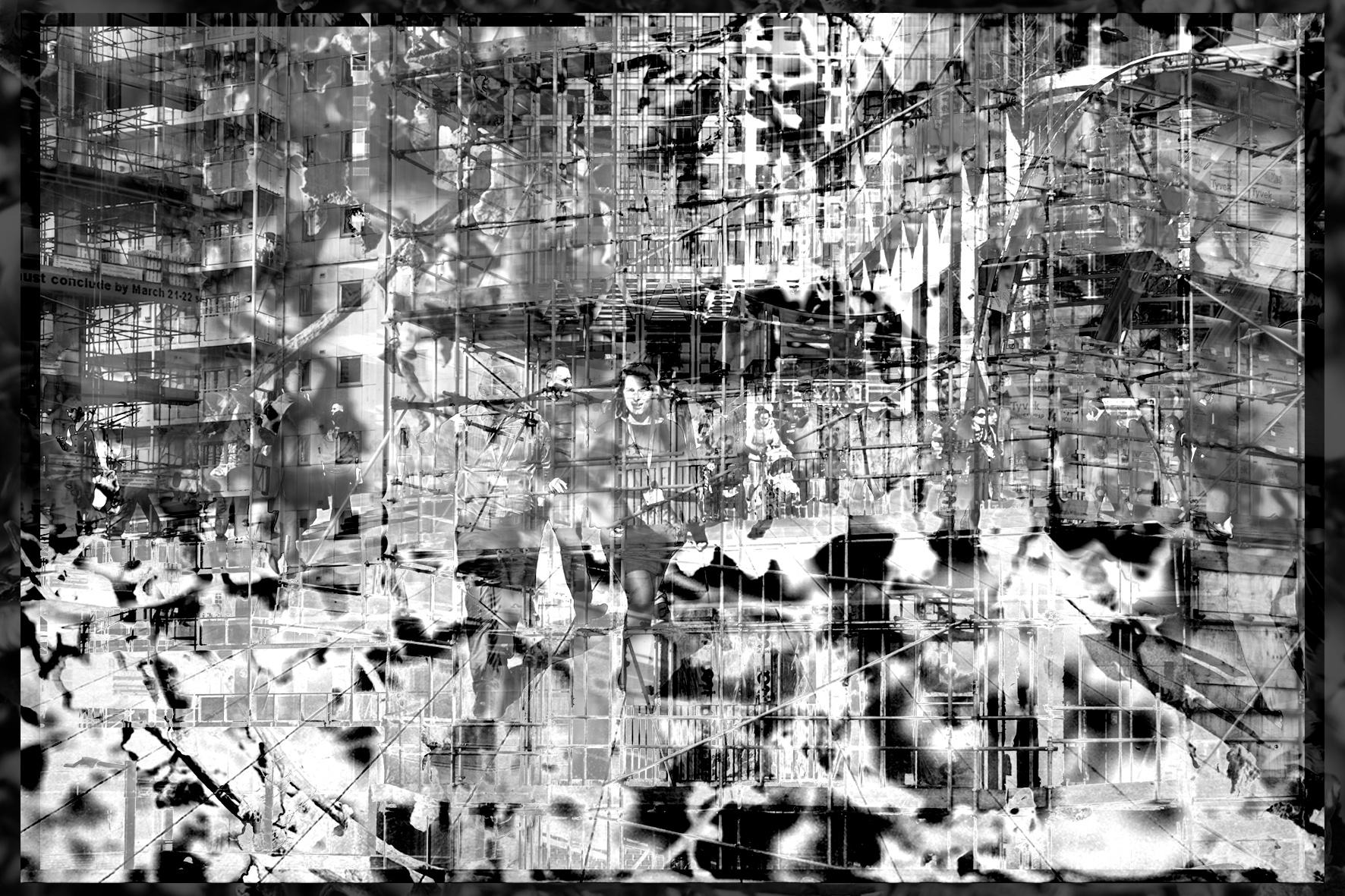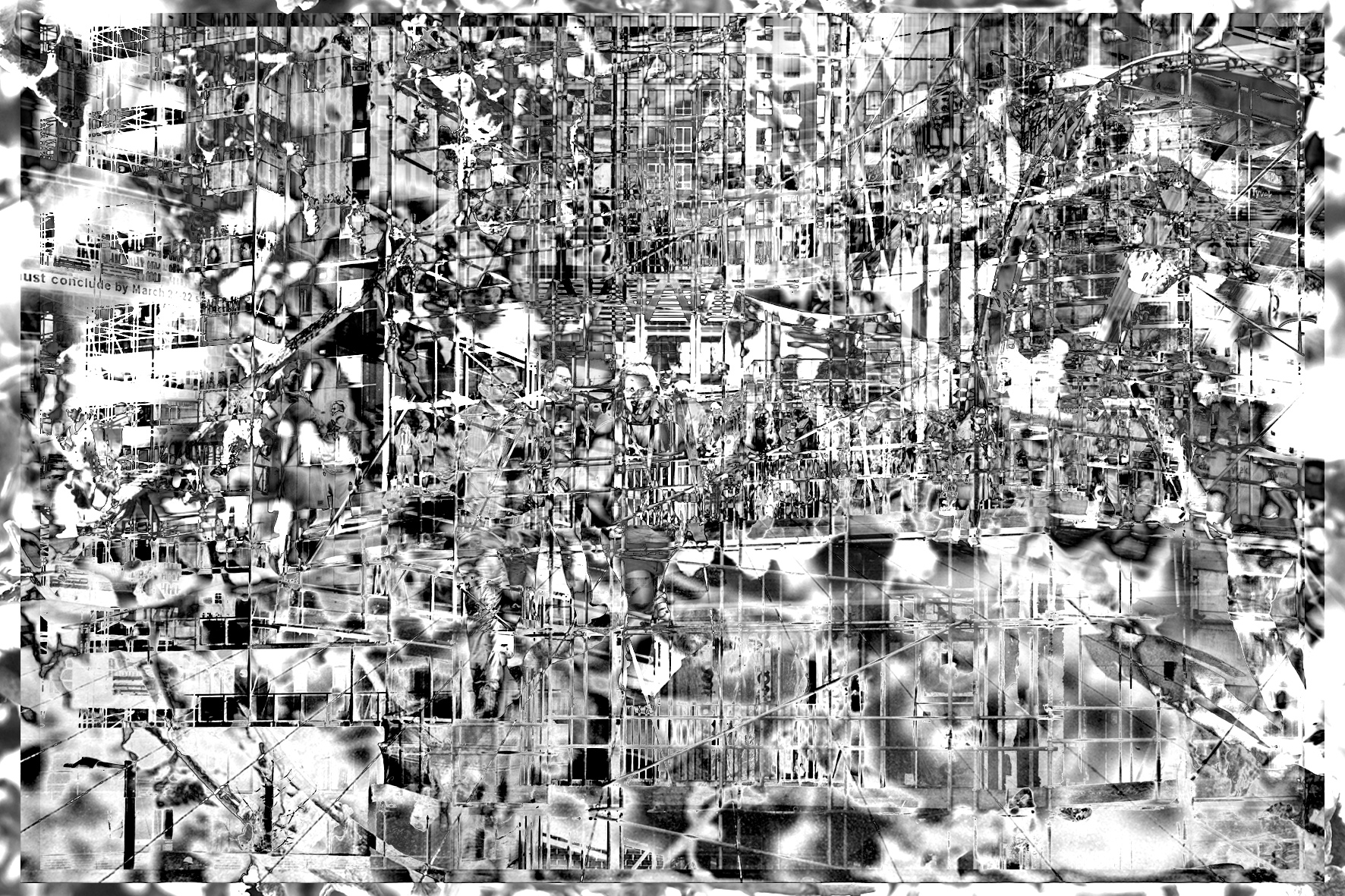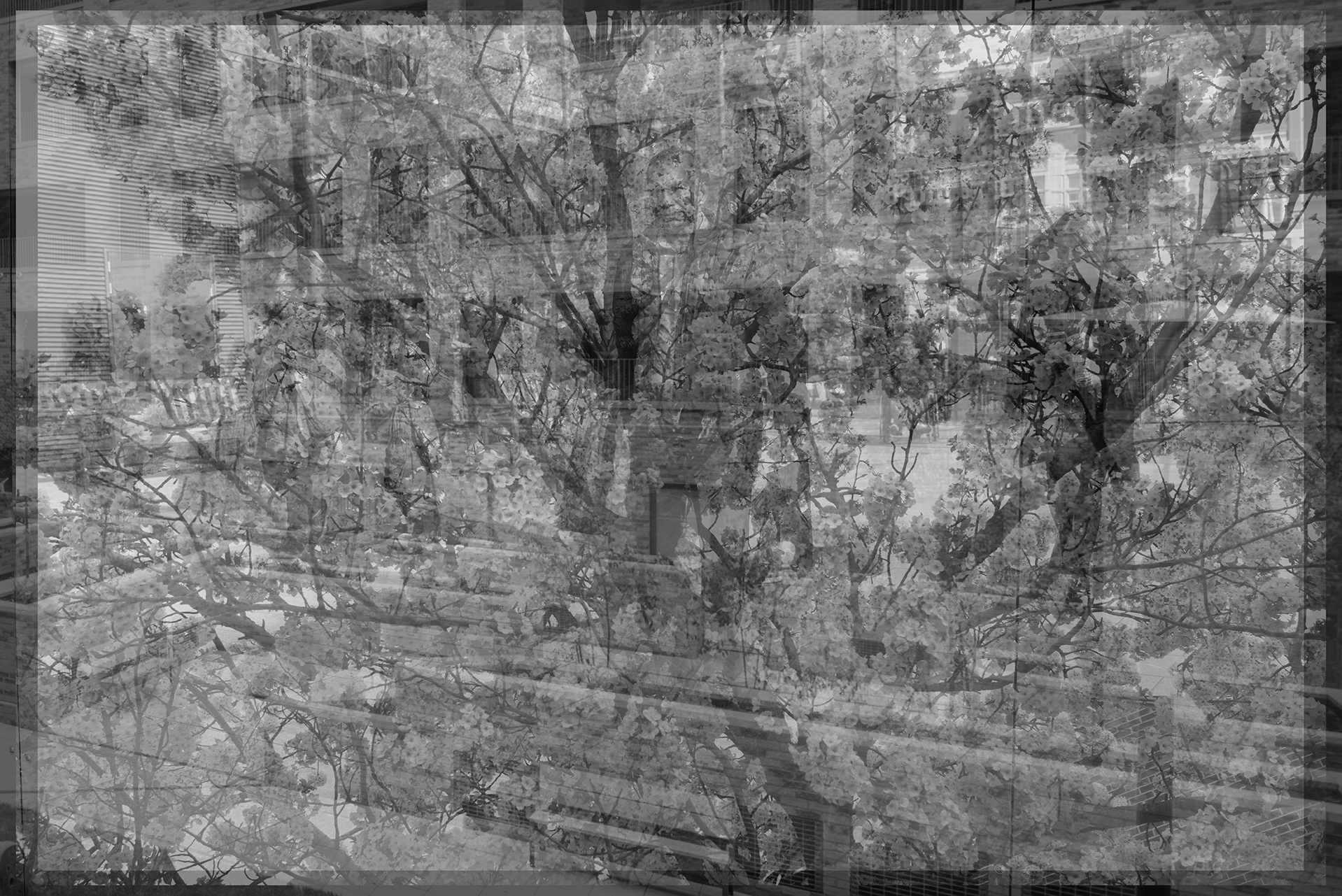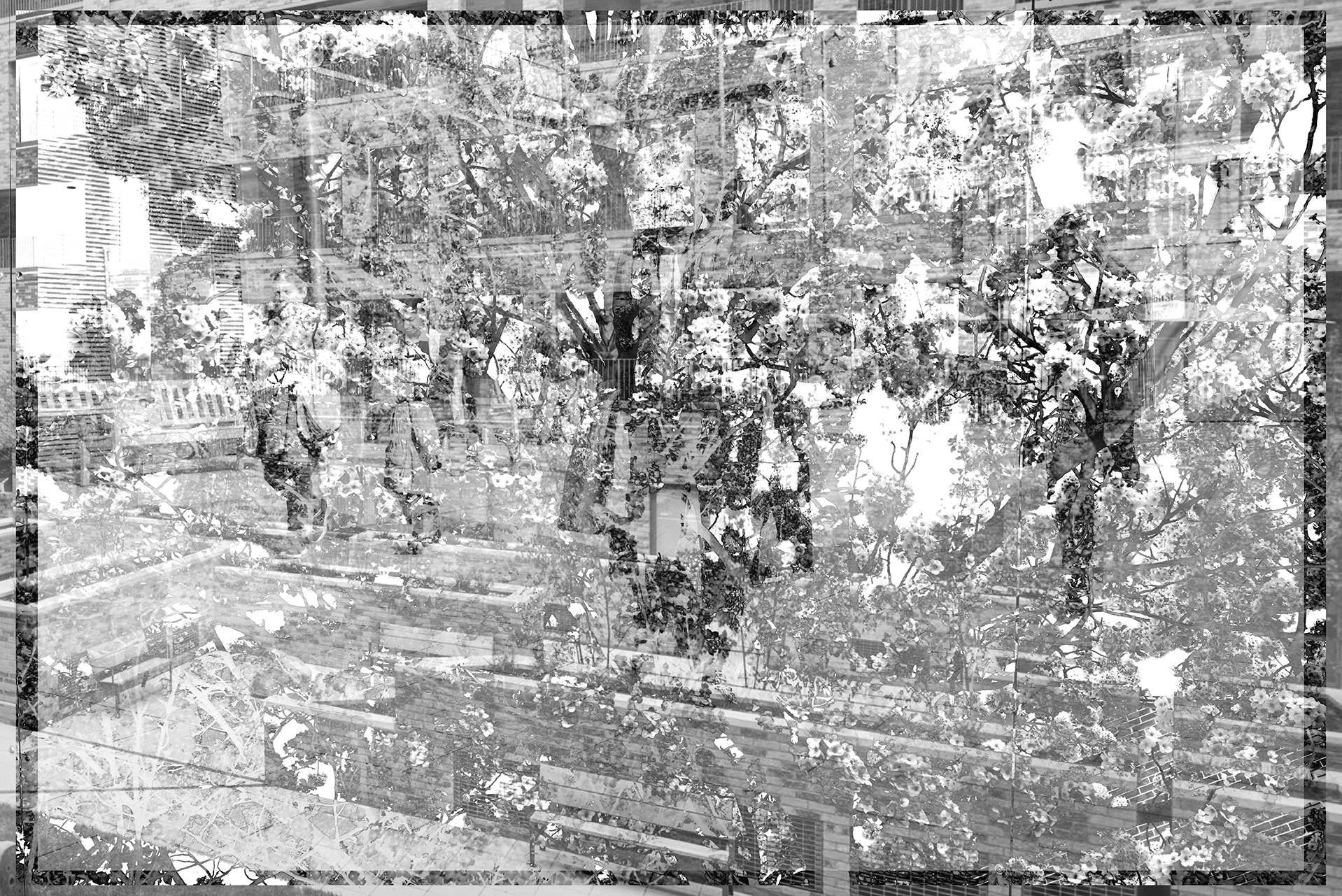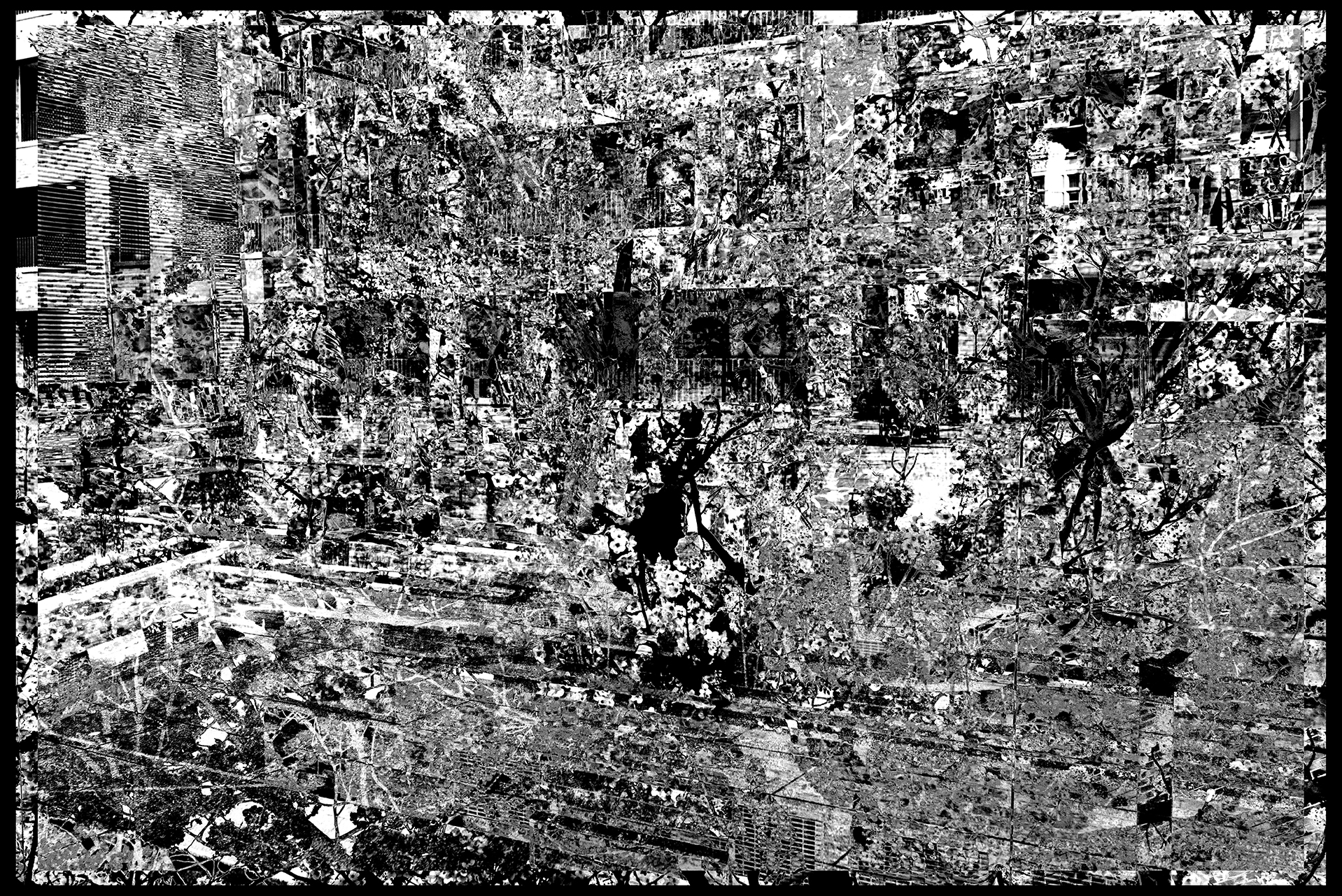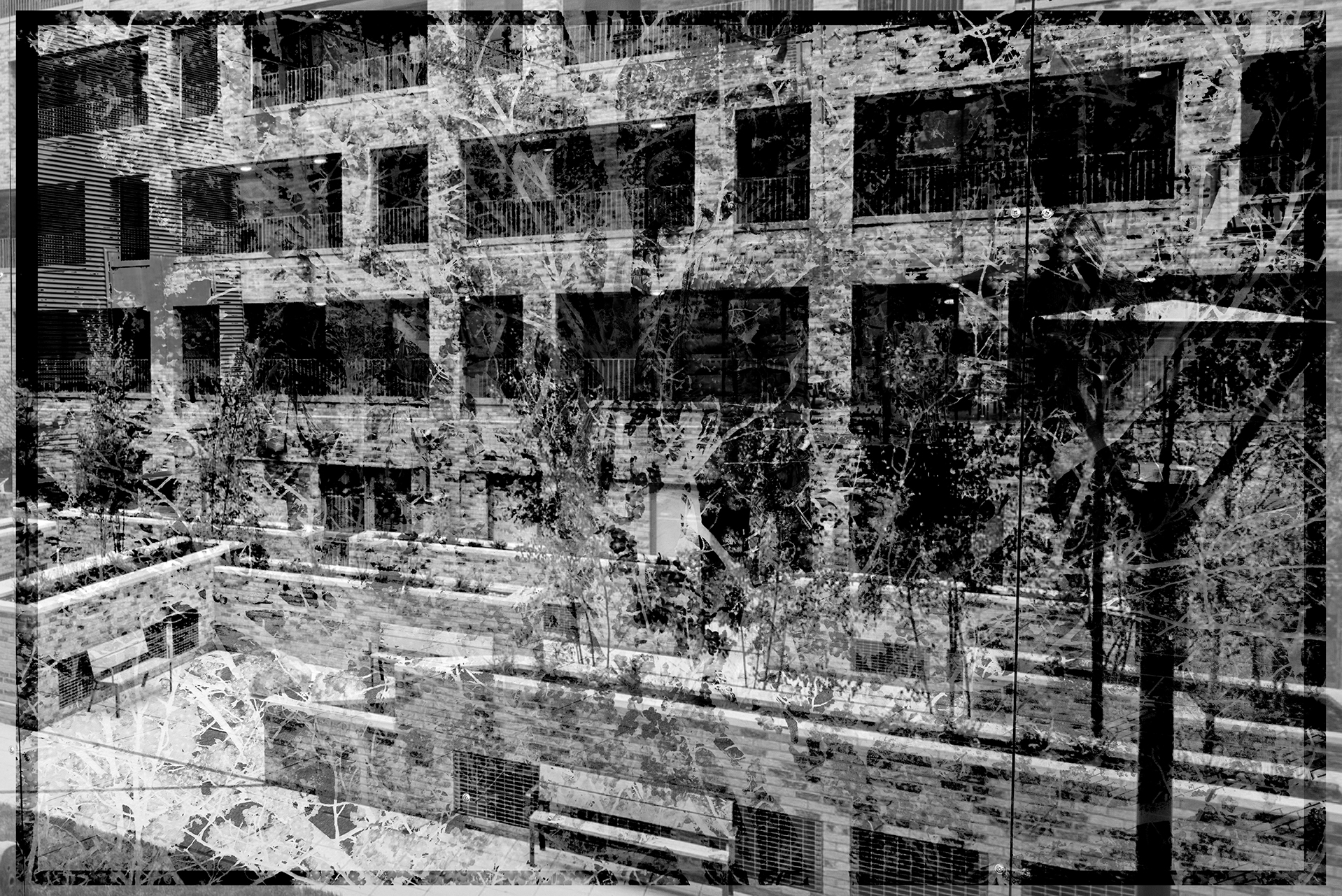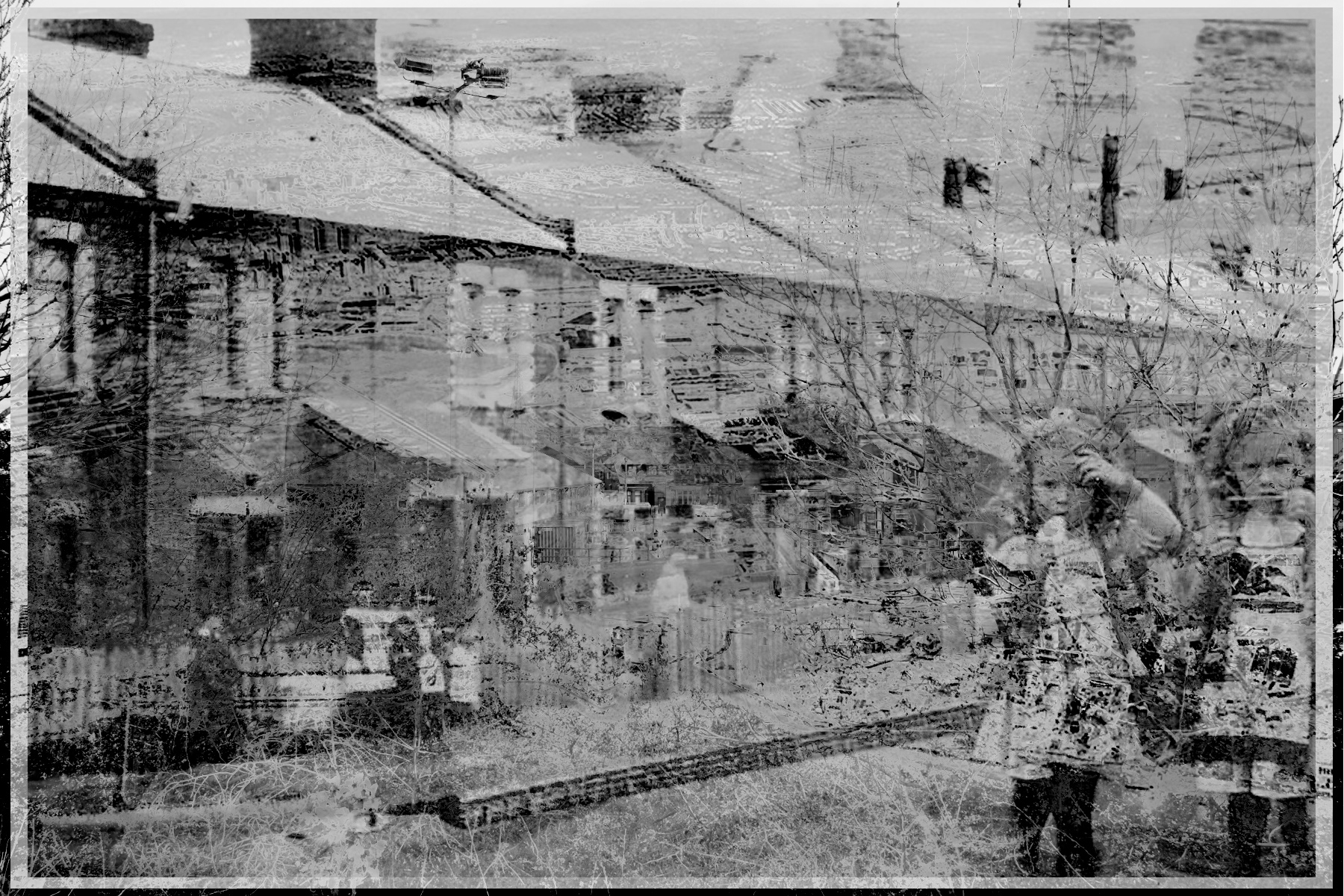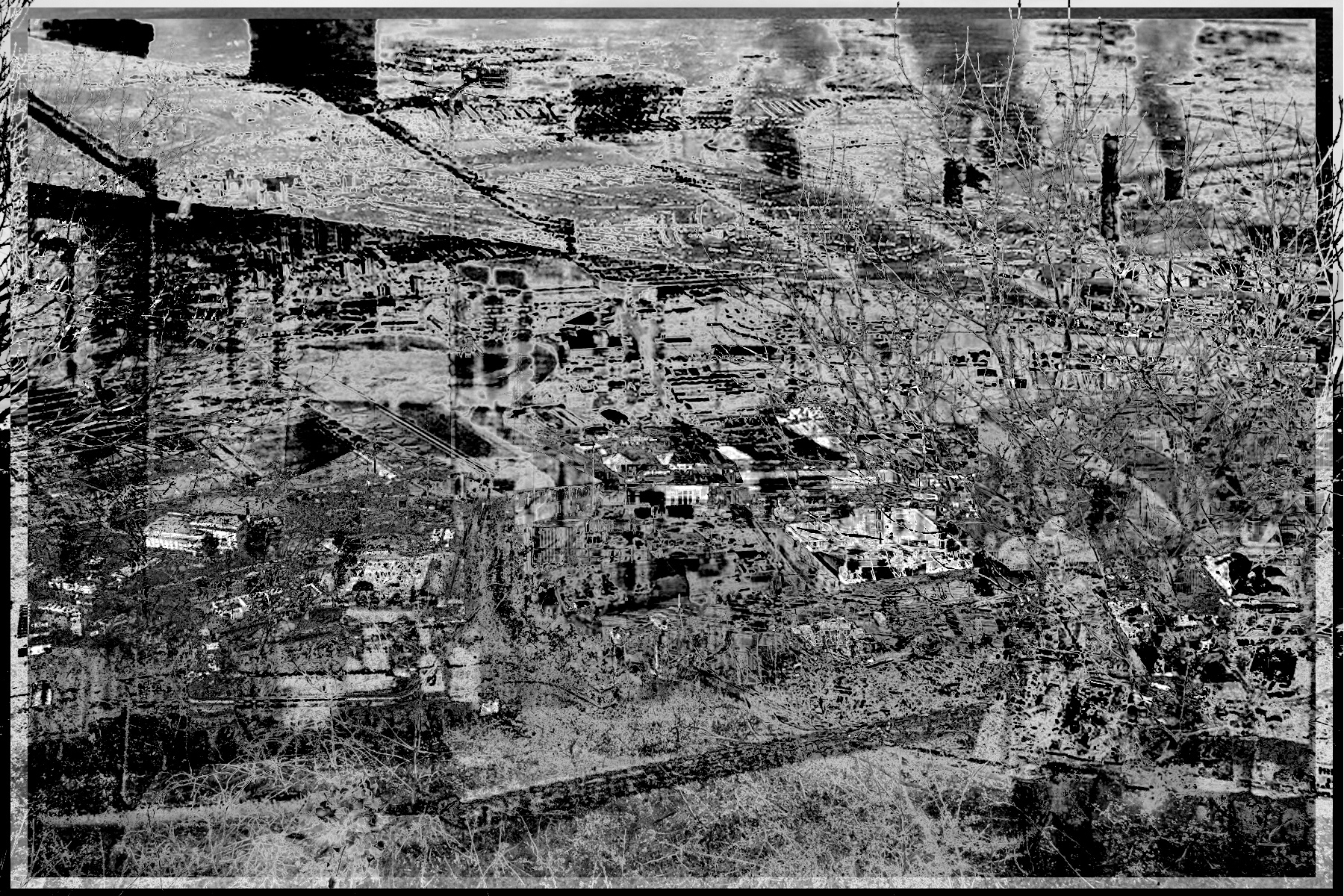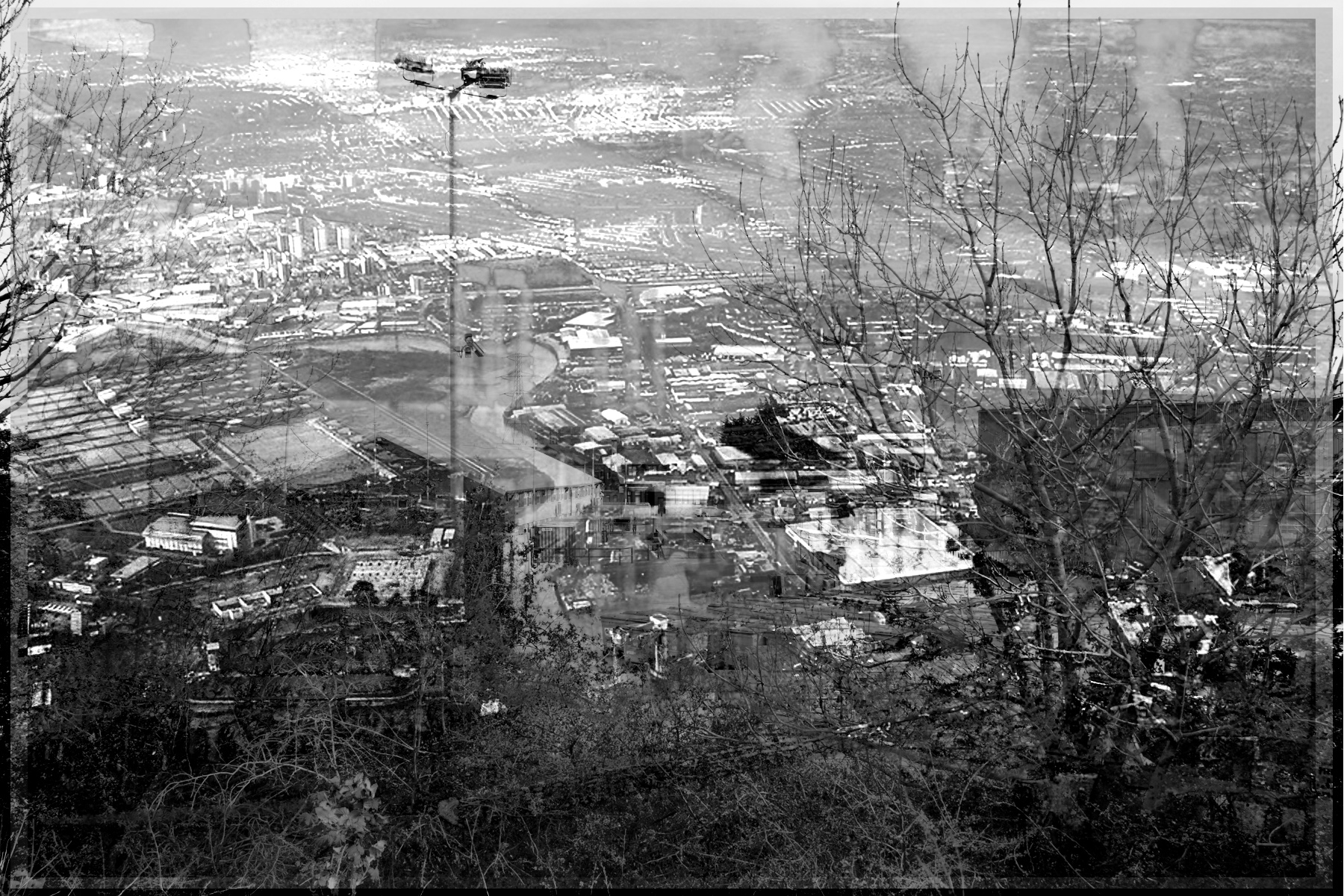It’s been through a number of iterations, and edited down from around three times the length. I probably cut out the wrong bits. Plenty of material ended up on the cutting room floor that could provide the basis for worthwhile CRJ posts (rather than just get lost). I’ll work on that.
Andrew Brown IC Critical Review Final ReducedInforming Contexts Work in Progress Portfolio
This was submitted as an online portfolio. It is in three sections, each comprising of four images and an animation. How the images were produced is described in my Critical Review and elsewhere in the Critical Research Journal. The animations are here. The galleries below present the four images from each section. This is experimental work that I started about half way through the module. There is a long way to go in developing it further.
Relating practice to learning objectives (Week 11 Reflection)
My own objectives for this module were: (i) to explore new forms of image-making; (ii) extend my engagement with and knowledge of contemporary theory in photography and visual arts; (iii) develop a stronger conceptual basis for my practice; (iv) position my photographic practice within inter-disciplinary enquiry and multi-professional practice; (v) progress with my project, including the development of skills and networks. I think I have made good progress in all these areas. In this reflection I will relate progress with these to the learning objectives for the programme.
The reflection will be prospective (looking forward to the completion of the degree) as well as retrospective (looking back over Informing Contexts).
LO1: Technical and Visual Skills.
I came to the module technically and visually competent in particular forms of image making, working both in film and digital media. I wanted to both improve and extend the scope of my work, and experiment with new approach to image-making. The workshops and the portfolio reviews in Falmouth helped me with this. The principal areas of development over the course of the module have been in the shift to making constructed images (inspired by the early Informing Contexts lectures), the production of composites and the creation of animations – all new areas for me. See portfolio and CRJ entries. Alongside this I have continued to develop portraiture and still life work in community and museum contexts, and environmental and urban landscape work in the photographic study of urban regeneration. The work in my portfolio, though in the early stages of development, and the other images included in my CRJ, demonstrate that I have an in-depth understanding of a range of photographic processes, and I hope displays sophistication in the application of techniques.
LO2: Visual Communication and Decision-Making.
Focusing on the relationship between human activity, urban development and the natural environment, and exploration of conceptions of time in relation to this relationship, has helped me to develop a clear conceptual basis for the work and a clear visual strategy and method. This has informed decisions made in the production, editing and presentation of images (for instance, the inclusion of animations and the form taken by the online portfolio in as a mode of presentation of the work). There is still a lot to do to develop this work further. It is, though, just one part of the work I have been doing towards my project. I have also exhibited work in print form (for instance, the exhibition of portraits of community project participants at a local community centre, and the creation of image banks with community activist groups. I have also worked with museums and galleries and with undergraduate students on the use of photography in object based learning, and the creation and exploration of archives. Although my portfolio is presented online (which I feel is appropriate for an online course), my principal interest, in the presentation of work, is in the production of prints, books and artefacts and their presentation in multi-modal exhibition and installation form. I hope that the work in my portfolio demonstrates a level of sophistication in the production and presentation of my visual work and the ability to communicate complex ideas.
LO3: Critical Contextualization of Practice.
Ethical concerns about covert forms of photographic work led me into more collaborative forms of image making. I have continued to develop this with my community focused work and work with students and museums. Moving into more constructed and manipulated forms of image-making in this module has led me to explore a greater diversity of forms of work in photography and the visual arts. From my CRJ it will be clear that I have become particularly interested in the work of Japanese photographers (starting with Hatakeyama and Sugimoto, and more recently Lieko Shiga’s Rasen Kaigan series, which I will write about later) and other photographers who cross cultural boundaries (such as the aboriginal artist Christian Thompson: in my work in Australia, starting at the beginning of May, I will be working for part of the time with rural and aboriginal communities, and supporting research projects that have been making images and artefacts). The ‘digital’ turn in my work has brought me in contact with a range of artists exploring time, change, identity and ‘datafication’. I have become particularly interested in posthumanist theory, and artists who are influenced by this. I have explored this in my CRJ, as well as considering the influence on photography and the arts of areas of the humanities, social research and natural sciences (for instance, theories of space and time from theoretical physics). I’ll say more about theory under LO5 (LO3 and LO5 seem to me to overlap in relation to theory). As I am focusing on urban regeneration, there is a strong sociological influence on my work. I hope that through my visual work and writing, I have been able to demonstrate in-depth knowledge and understanding of a diverse range of contemporary (and historical) photographic practice, and to contextualise my work in relation to this and to contemporary theory. The area that I particularly want to develop now is around digitisation, data, social (in)justice and self, and, in particular, the manner in which contemporary desire for data to represent individuals and groups mirrors earlier (thwarted) indexical desires relating to photography.
LO4: Professional Location of Practice.
Over the module I have become clearer about how to position my practice professionally. Coming to better understand the professional contexts for dissemination and consumption of photographic practice has enabled me to clarify both what I do and do not do as a photographer. I am not a professional photographer in any conventional sense: my work is predominantly as part of inter-disciplinary and multi-professional teams, and I want to explore what photography, and arts based approaches more generally, can offer in conducting research into complex questions, and in formulating and implementing actions. My audiences are, therefore, diverse, ranging from the participants in my projects through to academic researchers and policy makers. I am working at all levels from image making with community members through to playing a role in the governance of public bodies. I have come to understand better the dynamics of the fields in which photographers work, and want to actively act as an advocate for a broader vision of what photography can achieve more widely. At this point of time it is necessary, in the face of new imaging technology, software, data analysis, communications, associated social practices and applications of artificial technology to rethink all professions: photographers have to be pro-active in doing this, and to be clear, and confident, about what visual arts can bring to inter-disciplinary work. I’ve explored this elsewhere in the CRJ.
LO5: Critical Analysis.
Having taught social semiotics and cultural sociology, I came to the module with some knowledge of the key critical paradigms and theorists (in particular structuralist and post-structuralists like Barthes, Foucault, Derrida and Lacan, Frankfurt School critical theorists such as Benjamin and Marcuse, and sociologists, such as Bourdieu and Sherry Turkle). My own work has been broadly post-structuralist in approach, with a strong emphasis on language and the analysis of discourse in relation to social practices and the (re)production of social inequalities. My focus in this module has been to better understand posthumanist theory, which takes a more materialist stance and not only de-centres the human subject, but sees humans as materially intertwined and enmeshed in the environment. This gives greater emphasis to neuro- and bio-sciences and to relationships with the environment, objects and other species. Forms of posthumanist theory have been influential in the arts, and where I have explored this in my CRJ, it has been in relation to the work of other photographers. I have also explored areas of contemporary philosophy, for instance Harman’s Object Oriented Ontology and Francois Laruelle’s non-philosophy. Critical appraisal of my own photography and that of other practitioners draws on this work, as well as on perspectives from social research, urban development, environmentalism and cognitive neuroscience, and engagement with the work of other photographers and visual artists. As would be expected from this, I am using photography in a lyrical, analytic and heuristic manner, not as a narrative tool, and therefore have limited expressing opinion on narrative forms of photography (but have written about this in a way that is, I hope, constructively critical about ‘story-telling’). The module has expanded my knowledge of critical theory in photography.
LO6: Written and Oral Communication Skills.
I am confident in my ability to communicate fluently and eloquently in a range of formats and contexts, and to differentiate delivery methods appropriately according to audiences, and hope that my written and visual work, and participation in webinars and face to face activities, demonstrates this. In addition, I am working with community groups and individuals on estates in east London, running photography workshops for undergraduate and postgraduate students and working at board level in the areas of education, urban development and social research, so have to communicate and engage people with my work at a range of levels and in a variety of forms. I’m increasingly confident in using visual modes of communication, and the use of social media. I am based in London, but work internationally, so am able to work collaboratively online, and doing the MA has certainly helped to develop my online communication skills.
Positioning Practice (Week 10 Reflection)
One challenge of working within the context of a large and complex project is the feeling that it is necessary to map out the context (the overall objectives and structure of the larger project) whenever presenting current work. Doing that means that you spend a lot of time talking about what you are not presenting (the other parts of the project) rather what you wish to focus on. One of the things I have learnt from the activities this week is to focus on the work in hand, and to find a succinct way of conveying a sense (but not the detail) of the larger project. Here are some initial notes.
My project explores community engagement with urban regeneration in east London. The overall objective is to use photographic image making to explore how regeneration is impacting on communities and how groups and individuals can influence these developments to ensure that they benefit the people who live in regeneration areas.
To achieve this, I am: (i) working with residents to explore their experiences and understanding of and aspirations for development of the areas in which they live through their own image making; (ii) working collaboratively with community groups to produce photographic images to be used in campaigning and advocacy; (iii) developing my own photographic work to explore the relationship between community and environment in the light of regeneration and gentrification of areas of east London.
These are discrete, but inter-twined, bodies of work which act to inform each other. I am strongly committed to seeing photographic practice as diverse in form and purpose, and shaped by context. I don’t see what I do as photography, but as a range of related photographies.
My work-in-progress portfolio for this module relates to the third strand of the project, and presents my own response to the practices of the urban planning process and their consequences. It is informed and enriched by my photographic exploration of the lived experience of residents and activists in other parts of my project, but It does not attempt to represent the experiences or perspectives of residents and others involved in this process (this is part of my longer term plan for the Final Major Project). This gives me the opportunity to experiment with making images. In this work, I am using photography not so much as a means of representation, but as a heuristic device. Making and juxtaposing images enables me to explore and learn about the impact of regeneration on communities and on the environment.
The intent of this work is to explore the tension between the natural and the built environment in the process of transformation of living spaces/places, and the disempowerment of individuals and communities in late capitalism. It arises from working with community groups and other organisations involved in urban regeneration in east London, and a growing concern for the entrapment of disadvantaged groups in the conflicting agendas and strategies of the regeneration process. These concerns are explored alongside a consideration of longer term and broader environmental issues, informed by a critical engagement with post-humanist theory and object oriented ontology. This entails invoking a sense of time that is not linear and directional, and which demonstrates interaction between the built and natural environment, and human agency. This has led me to explore the creation of composite images using photographs from particular regeneration projects in east London.
Prior to starting this module, my practice fell firmly on the ‘hunter’ side of Jeff Wall’s hunter/farmer distinction. The hunter, as Cotton (2014) observes, pursues and captures their images, whereas the farmer cultivates and constructs. Ethical concerns about the potentially intrusive nature of street and other covert forms of photography, led me towards a more collaborative approach which draws on the practices of both hunter and farmer. Wall himself, though associated primarily with elaborately constructed images, sees his own practice as a form of hybrid (Wall, 2012). The work presented in my WIP portfolio, taking the definition provided by Smith & Lefley (2015) has shifted firmly into construction.
‘To construct means to build or make by putting together various parts. A constructed photograph is one that is formed by bringing together discrete elements to create a final picture’ (Smith & Lefley, 2015: 113)
Each of the images is constructed from three other images. The initial images are my own photographs (though I am also experimenting with the use archival images, drawings, maps, CGI and other source material). As I become more adept at using the process, I achieve a better sense of what images will produce the effects that I want, though there will always be an element of chance and serendipity, which can act as impetus for further experimentation. Although I have worked with digital photographs for the portfolio, I am also experimenting with analogue sources.
The challenge at this point is to draw together the photographic work that has influenced the development of this recent strand in my work, and in relation to which I want to position my work. Also, how to weave through this the various theoretical positions, in the arts, humanities, social and physical sciences.
References
Cotton, C. 2014. The photograph as contemporary art. Third edit. New York, NY: Thames & Hudson.
Smith, P. & Lefley, C. 2015. Rethinking Photography:
Histories, Theories and Education. London: Routledge.
Wall, J. 2012. Film about the Solo Exhibition. Pinchuk Arts Centre. Online at https://www.youtube.com/watch?v=lVv6GSpPZ_o [accessed 07.04.19]
Contexts of Consumption (Week 9 Reflection)
The focus this week has been on the places where people come in contact with photographic art, and ‘contexts of consumption’. I want to use this to take the opportunity to reflect on the form that my own photographic work is taking and how this can be circulated, displayed and made public. Each of the three aspects of my project with produce different kinds of outcomes, and will have different primary audiences. I’ll consider each of these in turn. It is important, however, to think about the relationship between these different forms of work and the manner in which the different audiences, and the contexts in which the work is encountered, relate to each other.
My project explores community engagement with urban regeneration in east London. The overall objective is to use photographic image making to explore how regeneration is impacting on communities and how groups and individuals can influence these developments to ensure that they benefit the people who live in regeneration areas. To achieve this, I am
(i) working with residents to explore their experiences and understanding of and aspirations for development of the areas in which they live through their own image making;
(ii) working collaboratively with community groups to produce photographic images to be used in campaigning and advocacy;
(iii) developing my own photographic work to explore the relationship between community and environment in the light of regeneration and gentrification of areas of east London. These are discrete, but inter-twined, bodies of work which act to inform each other.
The photographs produced in (i) are part of the process rather than being outcomes. They act as artifacts which provoke discussion and help gain insight into the lifeworlds of the participants. The outcomes of the work can be in a number of forms, including text with images. The audience for the work are the community members themselves and other individuals and groups who work with the communities, including planners, developers and local authorities, and activists and academics. Books and other print and online publications are likely to be a primary means of dissemination of the outcomes of this work. The images produced in (ii) are most likely to act as resources to be used by community groups to meet their own objectives. They could constitute a repository of images to be drawn on. This is what I have done with the Thames Ward Community Project, and they are using images I have produced in presentations, posters and publications about their work. It can also lead to exhibitions, for instance the recent exhibitions of portraits of participants in a community project at a local community centre.
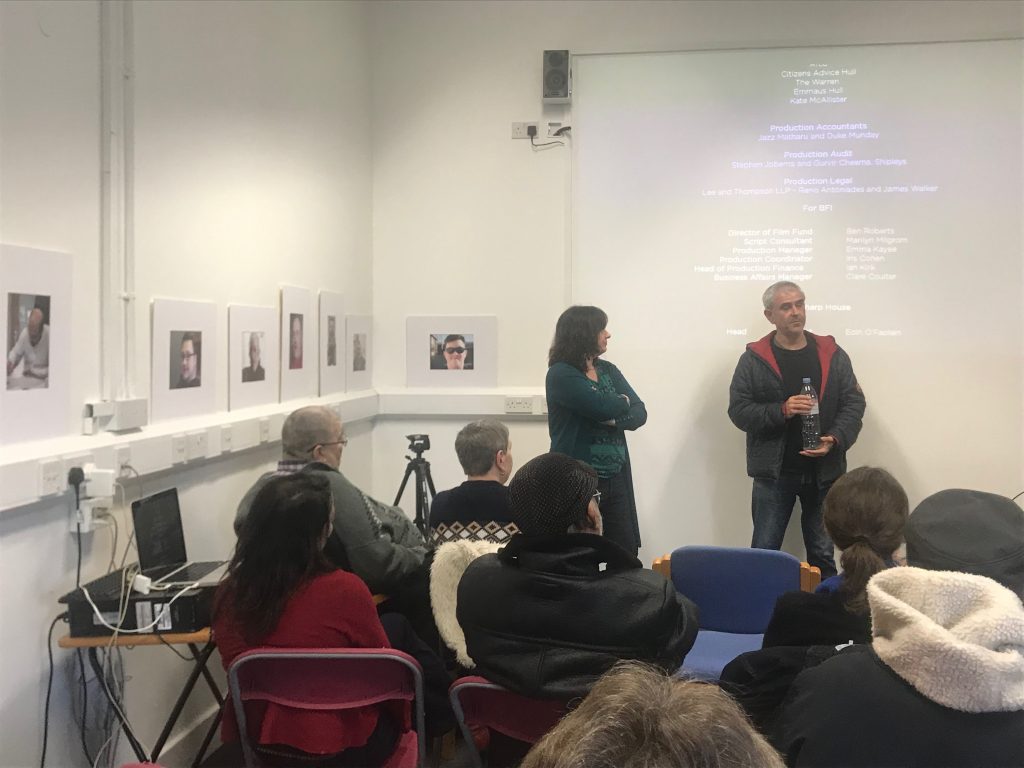
Other photographers who have carried out this kind of work include Emma Blau (who exhibited her portraits of members of the community on a west London housing estate on holdings around the estate).
Julian Germain similarly exhibited images made by and with the community in a favela in Brazil in community spaces, and also produced a newspaper containing these images, a strategy used by Simon Roberts in his work on the UK general election. Dana Lixenberg set up an online repository for her own images and those made by the community in a Los Angeles housing project. Wendy Ewald engaged members of the community in Margate in making images and displayed these with accompanying text in novel public spaces (for instance, on the side of Dreamland, as in the photograph below).

The key here is find ways to actively engage members of the local community in ways that is also able to attract the attention of a wider audience (as, for instance, Jermain and Roberts have done through books based on their projects).
It is the third area of work, my own photographic response to the contexts I am exploring, that is most likely to lead to wider dissemination and engagement beyond the immediate community. The exhibitions of the Urban Photographers Association would be one possible outlet for the kind of work I am doing, for instance The Urban Condition: Photography and Urban Cultures, a group exhibition in 2017 which explored urban place and space from a number of different perspective.
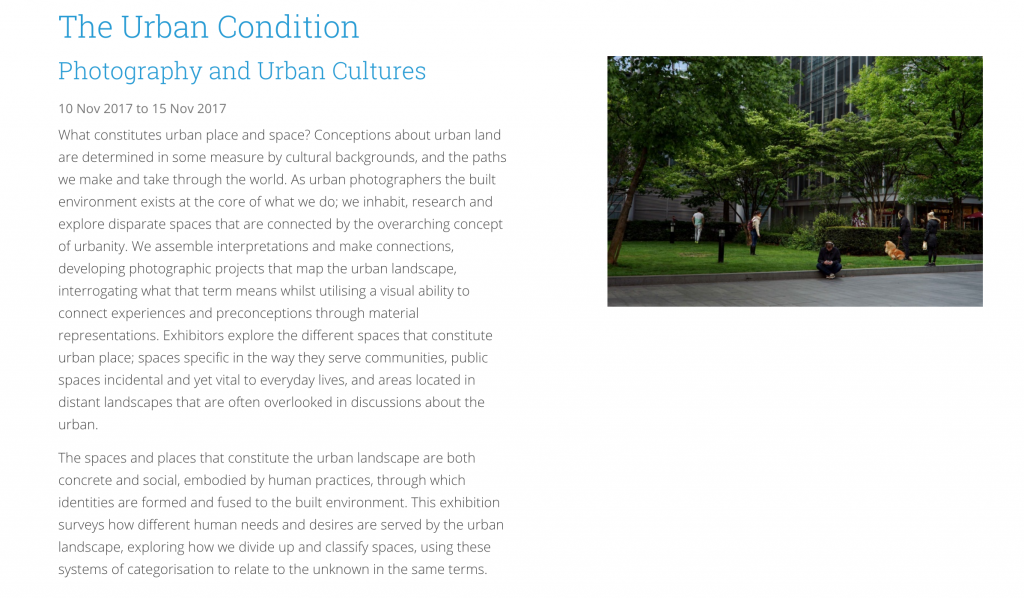
My current work, which addresses the relationship between space and time in the context of urban development and the natural and built environment, would appear to fit with the brief of exhibition and the intent of the artists whose work is represented. If this work achieves a greater degree of development, exhibitions around a particular theme, such as the Living with Cities exhibition (2018) at the Wellcome Foundation (see my post on this exhibition here), would also be a possible vehicle for dissemination.
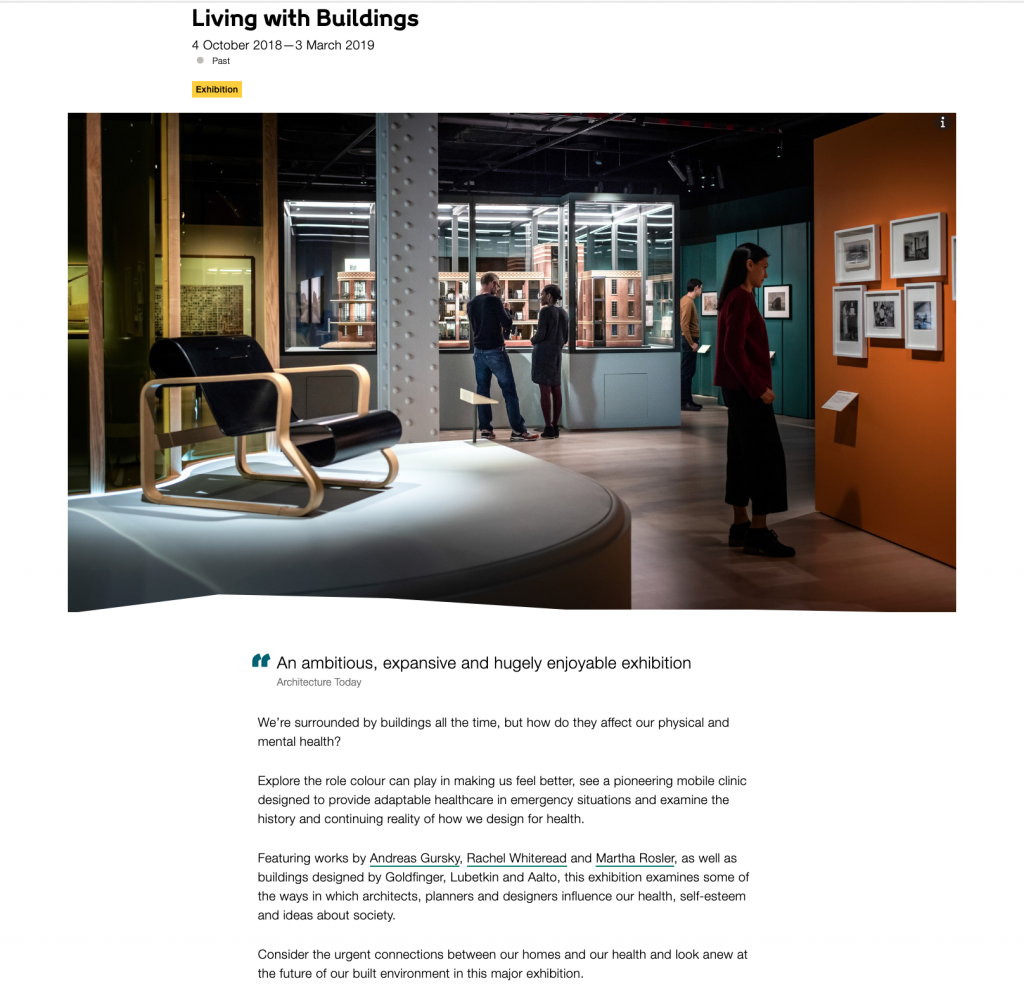
Over the past two weeks, I have also been to a number exhibitions in which a range of forms of work has been presented around a theme, creating mixed media exhibitions in gallery settings. For instance, the Deutsche Borse shortlist includes mixed media work addressing issue of abortion, terrorism, migration and the environment (see my discussion of this work here, and for the Colour and Poetry exhibition here and Moving Objects here). Whilst the gallery is clearly a privileged space to which there is unequal access in relation to social class (Barker, 1999; Bourdieu & Darbel, 1991), strong links can be made with other modes and sites of engagement, creating new possibilities for dialogue, one of the key motivations for the three forms of photographic practice represented in my project.
References
Barker, E. 1999. ‘Introduction’. In Barker, E. (ed.) Contemporary cultures of display. New Haven: Yale University Press in association with the Open University: 8–21.
Bourdieu, P. & Darbel, A. 1991. The Love of Art: European Art: Museums and their Public. Cambridge: Polity Press.
Artist’s websites
Emma Blau. 2016. Face Forward. http://www.faceforward.photo/ [accessed 01.04.19]
Dana Lixenberg, 1993-2015. Imperial Courts. http://www.imperialcourtsproject.com [accessed 01.04.19]
Wendy Ewald, 2003-6. Towards a Promised Land, Margate. http://wendyewald.com/portfolio/margate-towards-a-promised-land [accessed 01.04.19]
Julian Germain. 1995-2007. No Olho da Rua. http://www.juliangermain.com/projects/no-olho.php [accessed 01.04.19]
Simon Roberts. 2010. The Election Project. https://www.simoncroberts.com/shop/election-project-newspaper [accessed 01.04.19]
Multiple Messages (Week 8 Reflection)
My work on community engagement with urban regeneration involves working closely with communities and learning about the proposed developments and their impact on these communities and the environment. Making images is a part of this process. These images are part of both relationship making and the process of identification of themes and approaches. There are messages in this work, but as photography is being used heuristically (as part of the process of investigation, not necessarily in the production of final outcomes) these messages are formative and transitory. Over the course of this module, I am developing my own artistic response the the contexts I am exploring.
Photographic work in these contexts (urban regeneration and gentrification) has largely focused on the experiences of members of the communities affected by the changes (for instance, in different ways, Zed Nelson’s and Tom Hunter’s Hackney portraits and Emma Blau’s work with residents of an estate in West London, or Dana Lixenberg’s work with residents of the Imperial Courts social housing project in Los Angeles), or on the impact on the built environment of urban development (for instance, Metropole by Lewis Bush looking at developments around central London and Chris Dorley-Brown‘s studies of areas of East London over time).

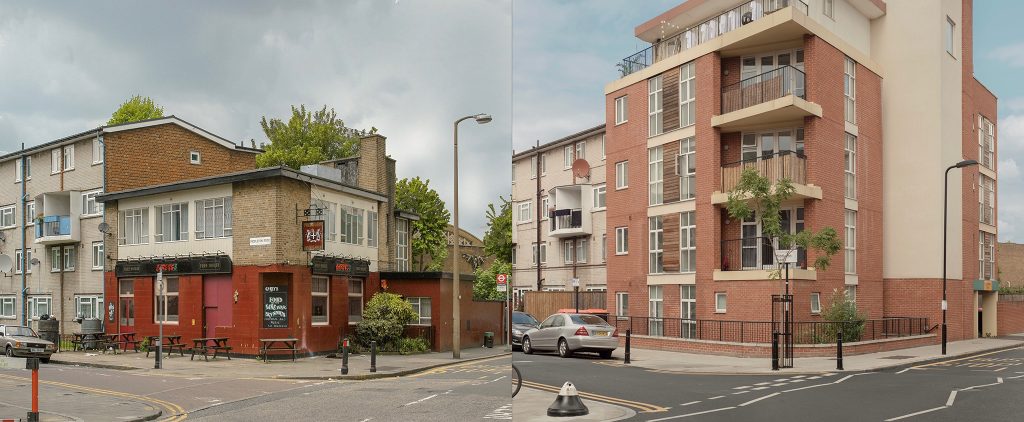
My work is taking a different direction. A dominant concern is the disempowerment of communities in the urban development process. Producing images with and for communities, to be used in advocacy and campaigning, addresses this in part in terms of action (with much to learn, in terms of both theory and practice, from Martha Rosler’s ‘If you lived here …’ project, see comprehensive account and analysis in Wallis, 1991). It leaves open, though, how my own image making will address this issue. Invoking the passage of time, the interaction of the human and natural in the environment and the social and environmental impact of current and future urban development. The use of digital manipulation, and animation, in my recent work has led me to look at how others have addressed these issues digitally, whilst still aspiring to produce artifacts alongside images (and images as artifacts). Amongst the artists discussed in Wolf’s (2010) survey of photography in a digital age, the passage of time is addressed through composites by Jason Salavon and mapping and algorithmically generated images by Siebren Versteeg.
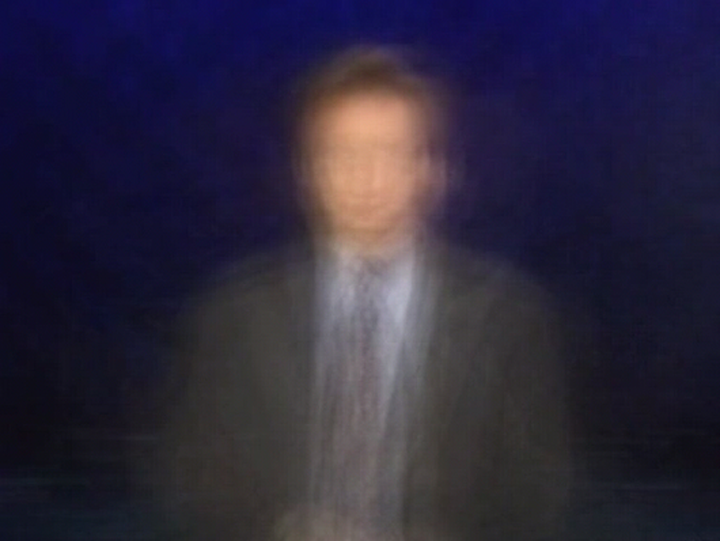
To loop back to the initial question for this week’s reflection, I do aspire for there to be multiple messages in my work, whilst recognising, indeed celebrating, the lack of control that the artist has in the reading of their work, and the possibility that it will produce new meanings for those who engage with the work (see Barthes, 1967, and Foucault, 1977, for critical consideration of the notion of authorship). Intent enhances the coherence and direction of the work, but does not determine its meaning or constrain its potential messages. The process that I am developing acknowledges, and, I hope, is able to be animated by, that indeterminacy. Prevailing social, cultural and economic conditions will always entail that there are perceived better and worse (in the moment, readable and incomprehensible) carriers for these messages, which makes it important to position the work, and index its intent, in relation to other work in the field (see Bourdieu, 1990, for discussion of the notion of field with respect to photographic practice).
References
Barthes, R. 1967. ‘The Death of the Author.’ Aspen: The Magazine in a Box. 5+6. UbuWeb: http://www.ubu.com/aspen/aspen5and6/index.html [accessed 25.03.19]
Bourdieu, P. 1990. Photography: A Middle-brow Art. Cambridge: Polity Press.
Foucault, M. 1977. ‘What Is an Author?’ In D. F. Bouchard (ed.) Language, Counter-Memory, Practice: Selected Essays and Interviews. Ithaca, NY: Cornell University Press. 113-38.
Wallis, B. (ed.).1991. If you lived here : the city in art, theory, and social activism. Seattle: Bay Press.
Wolf, S. 2010. The Digital Eye: Photographic Art in the Digital Age. Munich: Prestel Verlag.
Project Development (Week 7 Reflection)
No formal task for the reflection this week, so I’ll just briefly reflect on the development of my work over the past week and point to other relevant posts. I have posted reflections on the portfolio reviews and the skills building workshops at the Falmouth Face to Face.
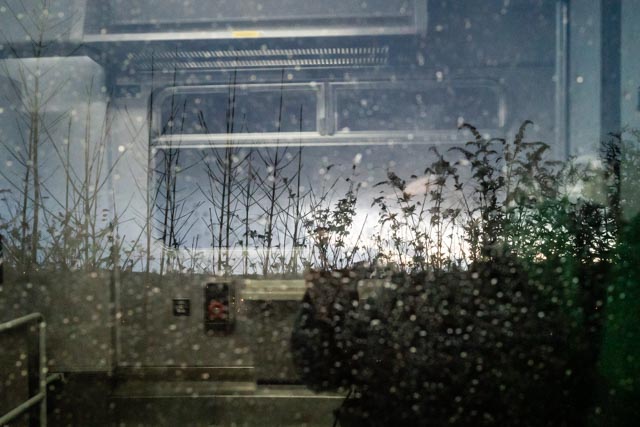
The former were really useful in reflecting on my current work, how I will develop this over the next module (Surfaces and Strategies, with a focus on different ways of presenting and making images material) and how to prepare (in terms of development of my practice) for the FMP. The latter helped me to develop skills in producing, processing and presenting images, and get to know other participants and tutors on the programme. I have written about The Living Image conference and how the themes addressed relate to the development of my own work here.
Over the past week I have been able to develop my thinking and practice in relation to a number of the issues raised last week. Time and the archive have been major themes. The Moving Objects Symposium raised questions about the place of the archive in the life of displaced communities, including those in refugee camps, and highlighted the role that the creative arts, and arts based methods, can play in understanding and empowering communities. More detailed consideration of this, and the Moving Objects: Stories of Displacement exhibition are posted here. I also went to the Deutsche Börse Photography Foundation Prize 2019 shortlist exhibition (reflections on that are here) and Grace Weir’s installation Time Tries All Things at the Institute of Physics (reflections on that here, in relation to the theme of spacetime and photography). I also took part in the London Prosperity Board Prosperity Index Users Group workshop at the Institute for Global Prosperity, which provided a good opportunity to strengthen links with with community and local authority stakeholders around the Olympic Park and in Barking and Dagenham, which I will need for my FMP, and to help shape the use of the Index in east London.
The major development in relation to my own work was studying the work of Moshe Raviv Vorobeichic, and in particular how he deals with time through photomontage in his two 1931 photo-books, Wilna and Paris (see discussion of this work in Nelson, 2010).
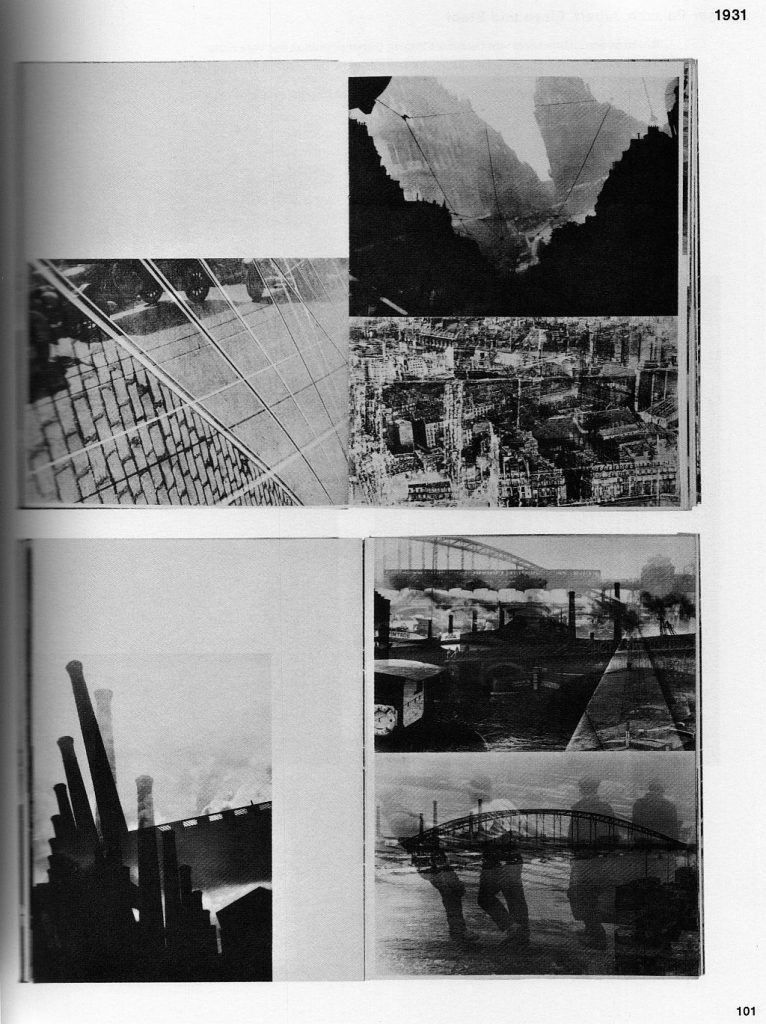
It was good to discuss this in relation to my own composite images with Michelle at the 1 to 1, and I’ll develop this further. In particular, I want to consider how I can juxtapose images with the composites (we decided that to put the constituent images alongside the composites would be distracting). In response to developments in contemporary understandings of spacetime, I am also thinking about pulling out smaller sections of the composites (a technique that was also used by Vorobeichic).
In relation to practical image-making, I attended a session on the ethics of exhibiting human body parts and spent half a day with students at the UCL Pathology Collection, photographing items from the collection that they will use in their presentations next week.
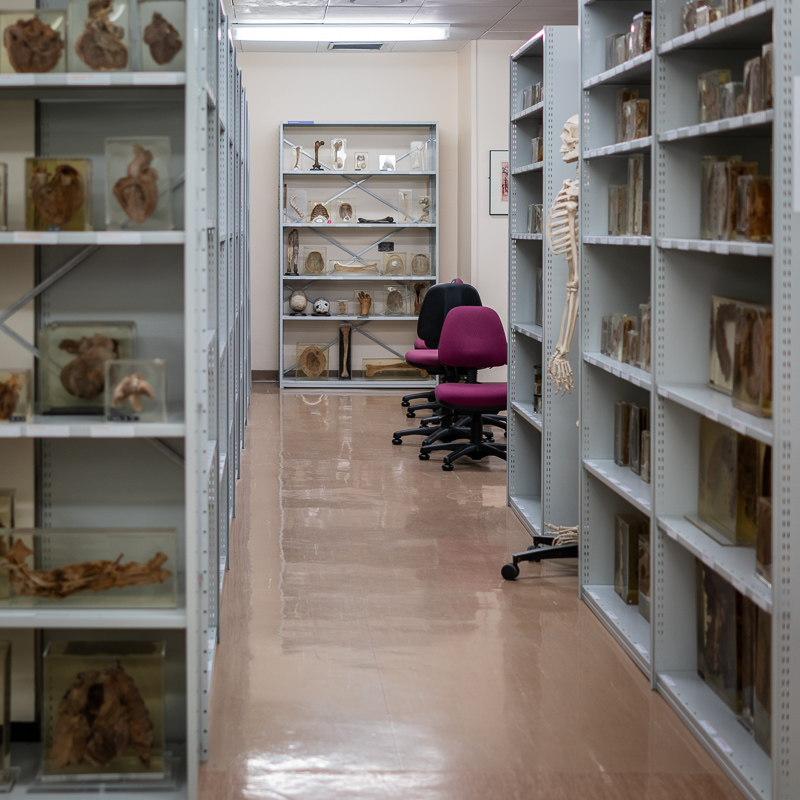
This collection is not open to the public. I have spoken to the curator about the possibility of working with the collection in producing artistic work, and she is keen to do this.
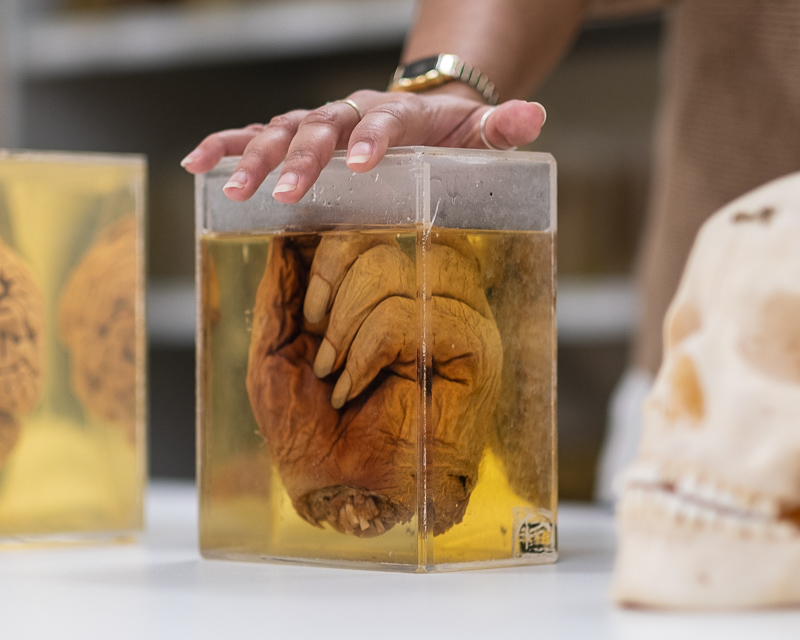
I’ll follow up, and could possibility use this as a focus for the activities and portfolio work for the Surfaces and Strategies module.
References
Nelson, A. 2010. ‘Suspended relationships: the montage photography books of Moshe Raviv Vorobeichic’, in Baetens, J., Streitberger, A., and Van Gelder, H. (eds), Time and Photography. Leuven Univeristy Press, pp. 141–164.
Vorobeichic, M.R. 1931. Ein Ghetto in Osten (Wilma). Schaubücher 27. Zurich/Leipzig: Orell Füssli Verlag.
Vorobeichic, M.R [Moi Ver]. 1931. Paris. Paris: Éditions Jean Walter.
Exhibitions
Deutsche Börse Photography Foundation Prize 2019 shortlist. The Photographers Gallery, London.
Moving Objects: Stories of Displacement. UCL Octagon Gallery, London.
Time Tries All Things, installation by Grace Weir, Institute of Physics, London.
Ideology and Photography (Week 6 Reflection)
The independent reflection task for this week asks us to consider whether our practice may or may not be seen as adhering to a specific ideology. In the creative process, ideology will influence both the production of our work (through the intent that informs the work, and the conceptual frameworks that underpin this) and its interpretation (through the systems of ideas that inform our audience in their reading and the contexts within which they encounter our images). The means by which our work is circulated and reaches an audience (via social media, or the gallery system, for instance) is also shaped by ideology. For instance, we produce and distribute our work in a period that is politically and economically grounded in neo-liberalism and increasingly subject to the push and pull of popularism, which will influence the nature of the means of distribution and the value attributed to the work in different contexts and by different groups and communities. Whilst recognition that production, consumption and circulation of photographic images is ideologically infused is necessary, we can adopt a critical or oppositional position in our work. In doing so, it is important to be clear that this will involve contestation: we need to have a sense of what we stand for and what we stand against, and the consequences of this. My own work seeks to create or provoke different ways of thinking about social and environmental phenomena. It is inherently critical of both current practices in urban regeneration (adopting the view, as expressed by Jane Jacobs, 1961, that ‘Cities have the capability of providing something for everybody, only because, and only when, they are created by everybody’) and some forms of contemporary theory and discourse in the arts (through, for instance, critical engagement with the idea of the anthropocene (see Demos, 2017), and the influence of object oriented ontology, (see, for instance, Harman, 2010, and critical commentary by Lemke, 2017.) How this impacts on the reception and reading of this work depends on the form of the audience and the context of engagement. Whilst the work is theoretically informed, and positioned, engagement with theory is not a prerequisite for reading and understanding the work. The work is intended to be accessible to anyone interested in issues relating to community involvement in urban regeneration and those interested in contemporary arts. The ensuing dialogue, in turn, leads to further development of the work.
Power relations are inherent in all levels of the work, from initial engagement with communities through to the circulation of the work, as is the commitment to ethical practice. I will expand on this, and how my practice relates to other practice and theory in the visual arts, in subsequent discussion of the development of my project and my work in progress portfolio, which will focus on the more political aspects of the regeneration project and more experimental form of photography.
References
Demos, T. J. 2017. Against the Anthropocene: Visual Culture and Environment Today. Berlin: Sternberg Press.
Harman, G. 2010. Towards speculative realism: Essays and lectures. Winchester: Zero Books.
Jacobs, J. 1961. The Death and Life of Great American Cities. New York: Random House.
Lemke, Thomas. 2017. Materialism Without Matter: The Recurrence of Subjectivism in Object-Oriented Ontology. Distinktion: Journal of Social Theory. 18: 133-152.
Juxtaposition of Images and Objects (Week 5 Reflection)
In my presentation for Positions and Practice, I expressed unease about street photography, both in relation to its mode of operation (the prowling, opportunistic, and at times invasive, hunter of images) and the forms of images produced (for instance, those which appear to denigrate or exploit the subject). Consequently, I have moved towards more collaborative forms of image making, but have remained pretty much on the hunter side of the hunter/farmer metaphor invoked earlier in the module. Over the past two weeks, however, in the development of the ‘art’ side of my photographic practice, I have explored constructed images, in particular through a process of multi-channel combining and mixing of images. The intent is to bring together, in a single frame, invocations of the past, present and future of a particular place, and to position human subjects in this hybrid re-imagined space.
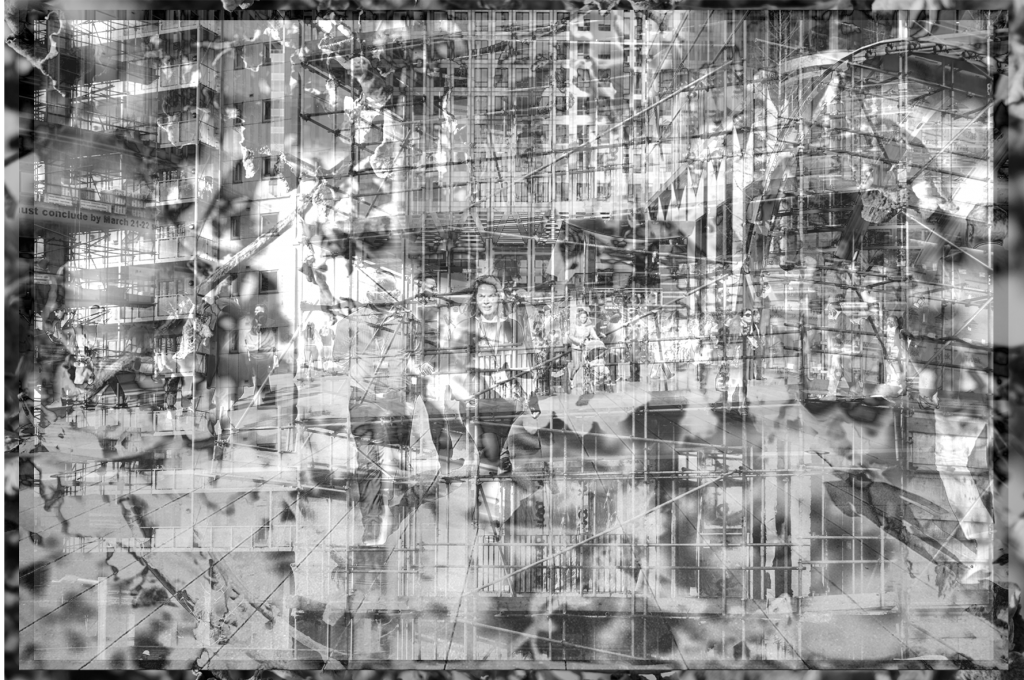
The image above combines a photograph of people in a public place, mixed with an image of construction in the area (invoking the future) and a macro photograph of plants found in the mostly heavily developed and concreted space (invoking the past). In my own ‘looking’ I am attempting to identify resources that can be used in the construction of an image that explores the interaction of the past, present and an immanent future, and the relationship within this between the human, natural and built environment. In this way, the visual constitutes material in the production of an image through juxtaposition. Changes in the manner in which channels are mixed can have a marked effect of emphasis within the image, as can been seen in this alternative mix below.
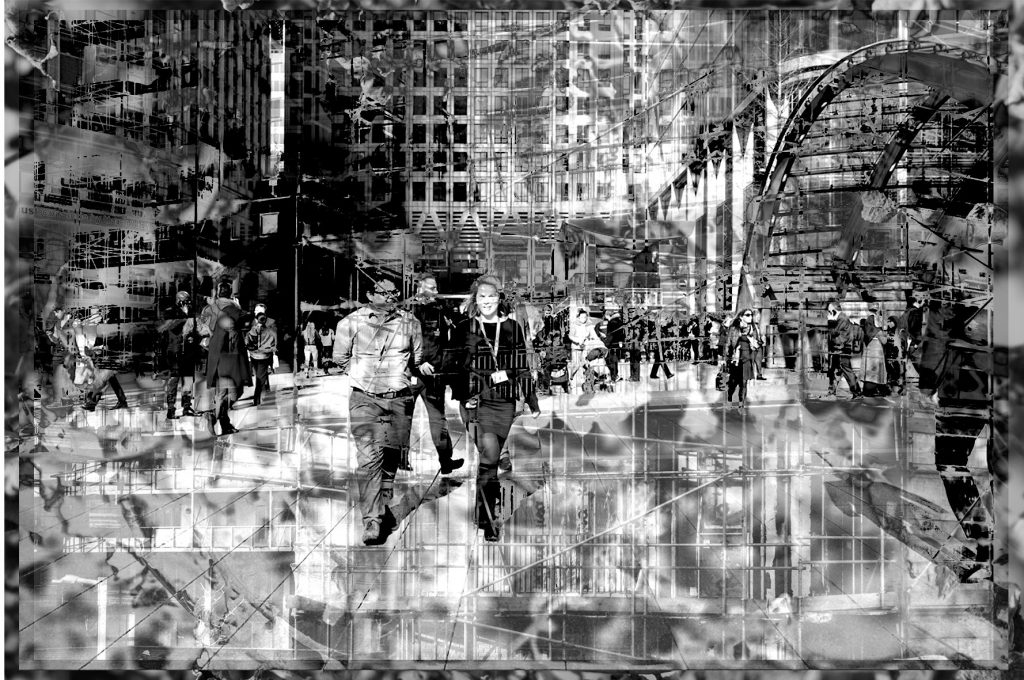
This opens up the possibility of a short moving image that flips continuously from one to the other. It also influences how I shoot and edit, with both the structure and content being influenced by the use of the image in creating the multi-channel work. If I was selecting a single, standalone image from this particular setting, it would, I think, have been the image below, but this wouldn’t work in the creating the mix above (note: forthcoming post on the process and how this relates to intent and theory).
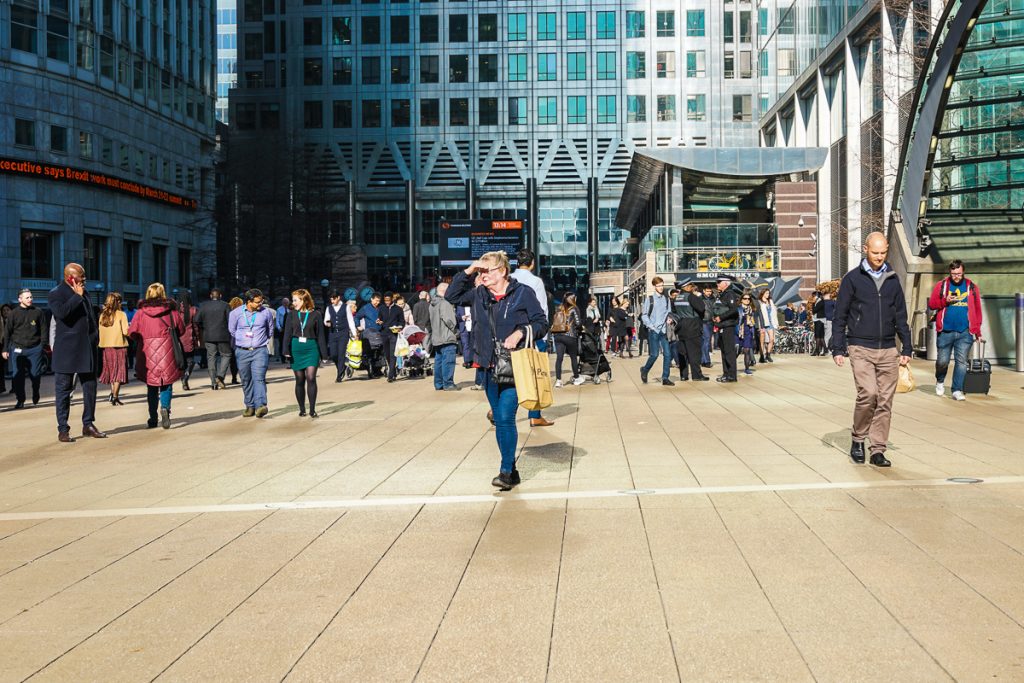
Edmund Clark, in his exhibition ‘In Place of Hate‘, arising from a 3 year study of HMP Grendon (Europe’s only wholly therapeutic prison, specialising in the rehabilitation of violent and sexually violent offenders), included pressed flowers found on the site, as a way of both highlighting the contrast (and resonances) between the harshness of human incarceration and the fragile (but resilient in its insistence to grow in the environment) natural world. My images seek a similar juxtaposition and play between contrasting elements, but within a single image. The process of multichannel mixing (described here), however, both renders each element less distinct, and attempts to convey a sense of the interaction between elements. In this work, I am neither simply hunter nor farmer (though the process entails elements of both), but rather designer, architect, collector, curator, alchemist, experimenter and more. The approach opens up the prospect of both the creation of new images for the purposes of mixing, and the incorporation of archival material, computer generated images and found images.
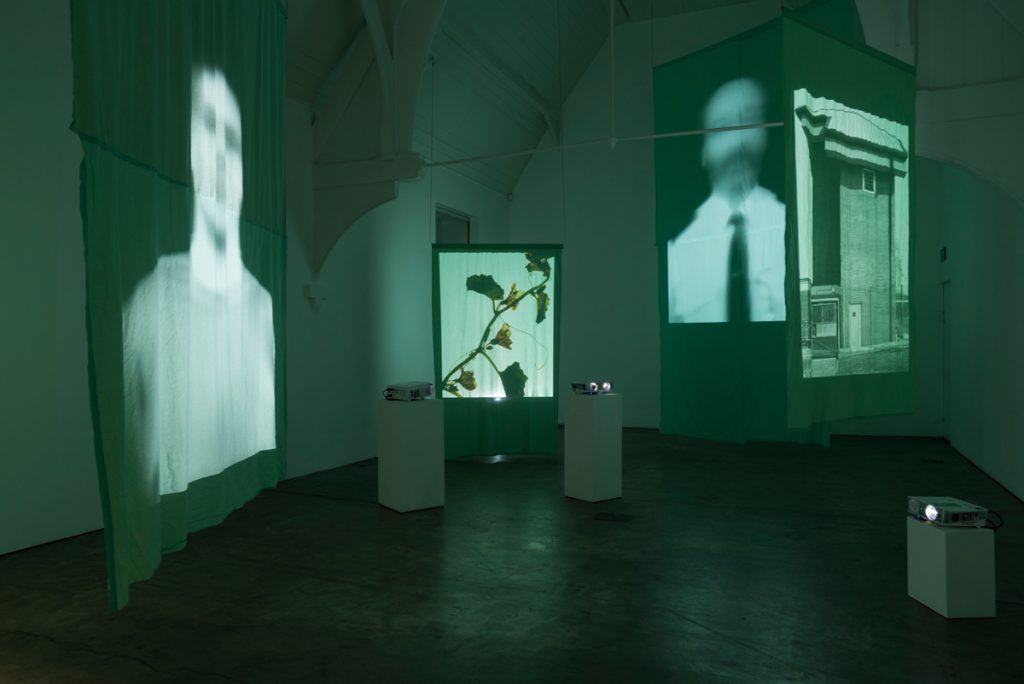
The resulting images can be considered to be fictions of a sort, pulling together ‘untethered’ materials from elsewhere, and combining different ways of looking (and, therefore, different forms of gaze). The intent of the fiction, however, it to explore relationships in time and space, and thus the approach resonates with the idea of fiction as methods (see my discussion of the work of Francois Laruelle and the arts here). I am producing the work for an audience that wishes to explore ways in which the visual arts can be deployed, in conjunction with other approaches, to explore complex human and environmental issues. How the reader interprets the image depends very much on context, and the motivations and interest of the reader. As with all forms of image making, there is a need also to work to actively create an audience, and to seek appropriate outlets and contexts for the work. The images are clearly challenging to read (given the detail, the prints will need to be large), and the process in the early stages of development.
References
Edmund Clark, 2015-17, In Place of Hate. https://www.edmundclark.com/works/in-place-of-hate/#1 [accessed 04.03.19].
Photographies and Audiences (Week 4 Reflection)
I have written earlier about the notion of ‘photographies’ rather than considering ‘photography’ as unified (or even unifiable) practice or discipline. Accordingly, I have divided my practice into a number of different domains of practice, each having its own intent, audience and means of dissemination/circulation (and outside this self-consciously photographic work, of course, use photography and photographic images in a variety of other activities). There are, however, a number of underlying concerns (about theory, practice and the nexus between these, for instance). Although I have described my project as having three levels of production and circulation of images/artifacts, there is no a priori hierarchy – these domains of practice (my own art, collaborative campaign image making, engagement with community image making) are just different contexts for the deployment of photographic image making (and therefore all contributing to my development as a photographer, and the development of my skills and understanding of the processes, practices, contexts and fields of photography).
Over the past week, I have made advances in all three domains (which I will describe in other posts). For the purpose of this reflection, I will focus on my own artistic practice. The aim of this work is to develop a distinctive means of exploring areas of material, social and cultural domains of human experience, for instance the impact of the process of urban regeneration on residents. The intent of the work is to examine the interaction between different interests in, experience of and aspirations for a particular place and the changes that take place over time. There is thus a need to bring time and place, and different subjective relationships to these dimensions, into the same space, through, for instance, juxtaposition within or between images and artifacts. To do this also entails a multi-modal approach. At this point in time, I am experimenting with images; ultimately these will be combined with sound, text, moving image, artifacts and other media in exhibition, installation and/or book form.
The principal audience for this work is others with a critical interest in arts-based practice and research and the contribution this can make to the critical understanding of human experience and engagement with the world. The audience would also include those who are interested more broadly in the issues I am exploring, or having overlapping interests from other disciplines and areas of practice. The audience would also include people directly involved in the contexts being explored (for instance, residents, developers, councillors, activists, in the case of urban regeneration), as well as those with a direct interest in the visual arts. At this point in time, I am engaging with people in a variety of communities in the evolution of the work.
For me, ambiguity is one of a number of strategies available in making images and juxtaposing them with other modes. If work is specifically aimed at examination of photography as a practice or field, I can see that ambiguity might be an intent in its own right. However, ambiguity without context is untethered from meaning: in making sense of the ambiguous image, the reader imposes their own context which, it might be argued, radically alienates the image from the maker. Ambiguity as a sole intent thus might give rise to a number of novel and engaging images, but ultimately will not provide the basis for an enduring and coherent body of work: that would require a broader conceptual base, and a corresponding (but not necessarily all encompassing) sense of direction.
Over the past week I have experimented with the overlaying of images, and in particular the exploration of multi-channel works. Although the aim has been to produce works in colour, some of the most satisfying images have been monochrome (working with monochrome images in three colour channels and then converting back into monochrome by de-saturating, or using a gradient map, at the final stage). The image below juxtaposes the built (fence) with the natural (macro plant images).
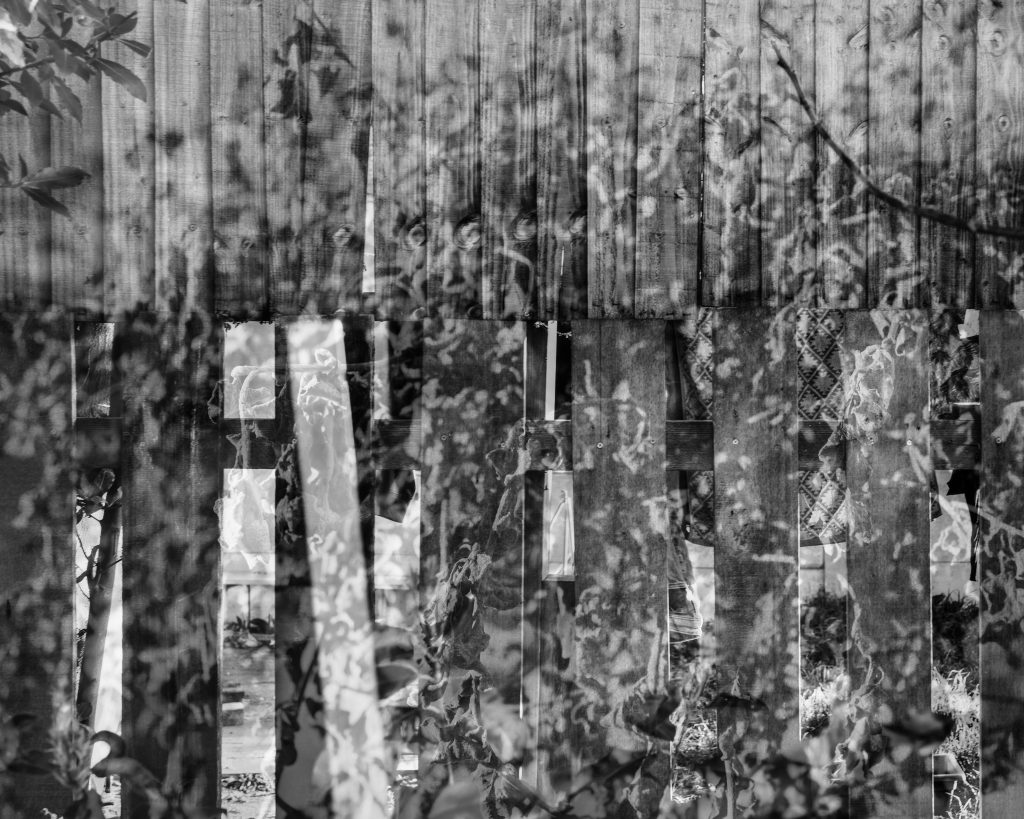
This image combines different scales of image taken in the same place (Stratford Station, from a train).
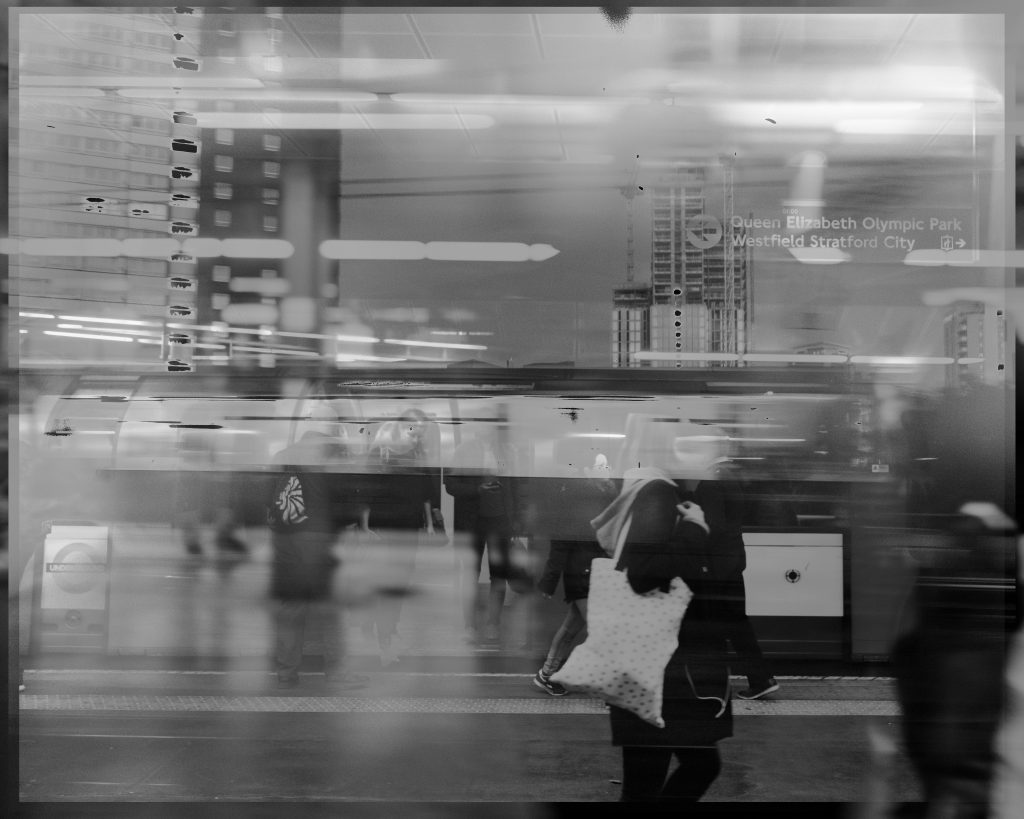
The form of the third monochrome image combines human forms in the built environment, with urban nature and a macro shot of a corroded surface.

In all cases the distinct and discontiguous (in time, space, scale, natural/human/constructed) are brought together in the same space, with the intent of produce an open text which invites interpretation. There are similarities, particularly the second image, with the work of Antony Cairns (who uses chemical not digital processes and has experimented with printing on aluminium plates and displaying images on Kindle screens).
In the colour work, I have explored the use of existing images. The following three images are formed by overlaying images from the triptychs produced in the first module.
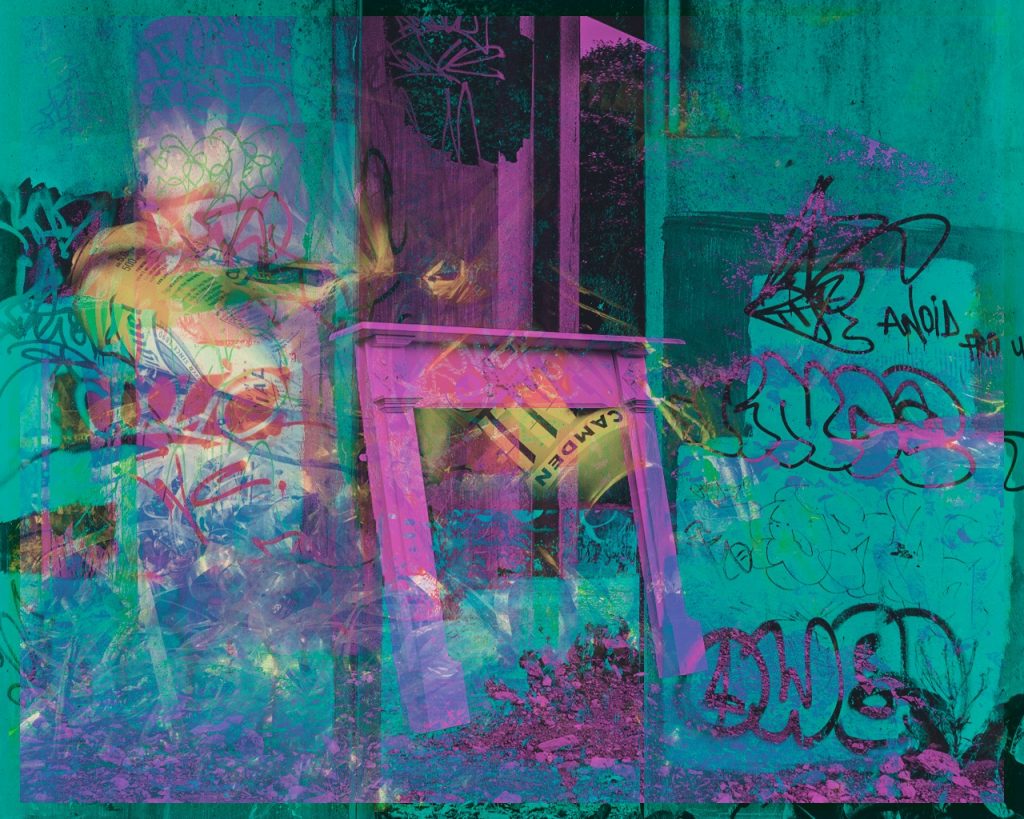
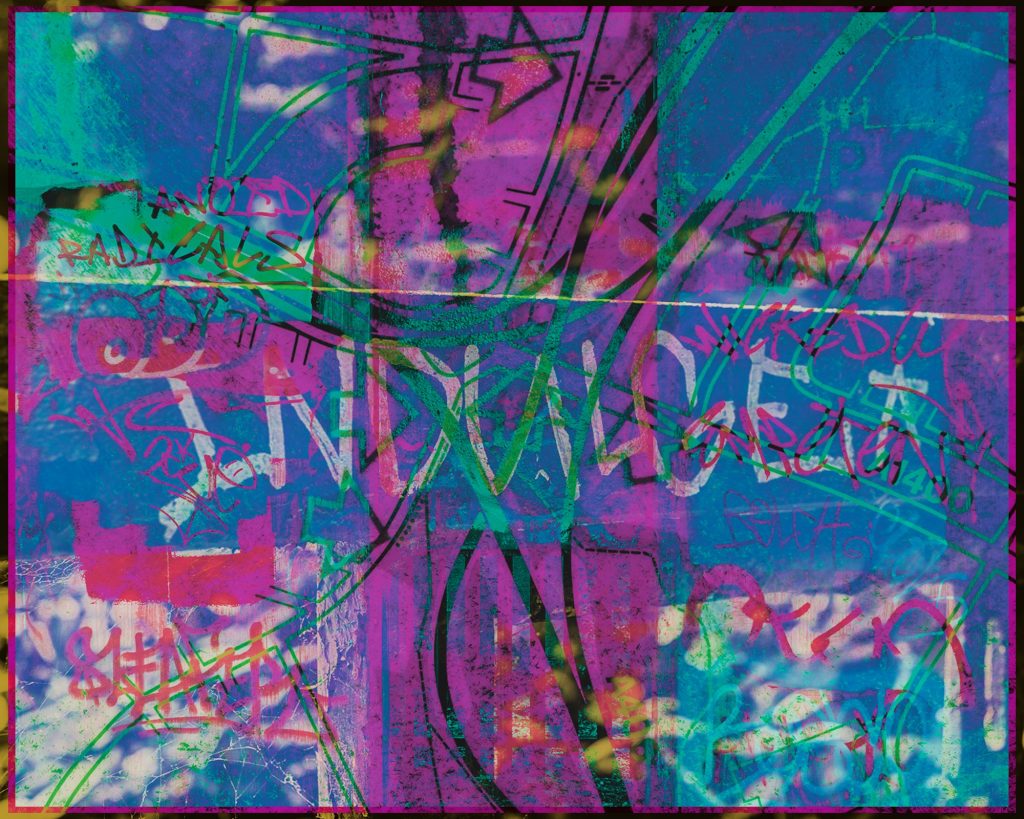
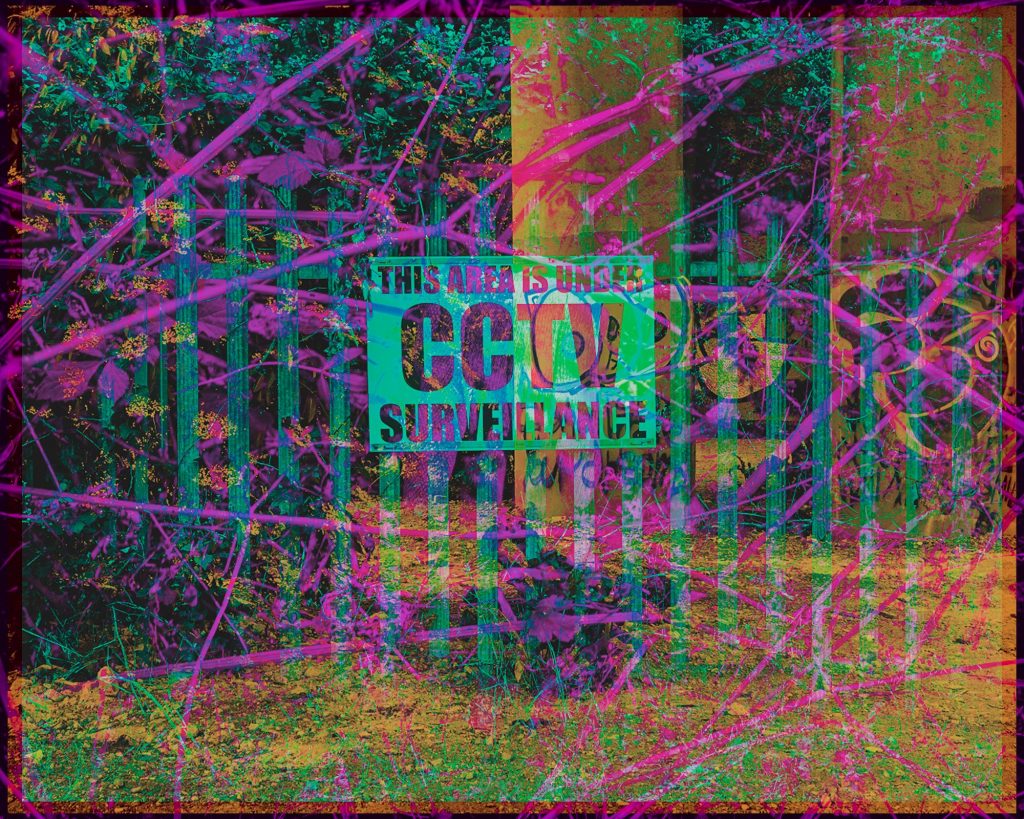
The final image combines a developer produced image of the future, with an image of construction in progress and an image of the natural landscape that is in the process of being ‘over-written’.
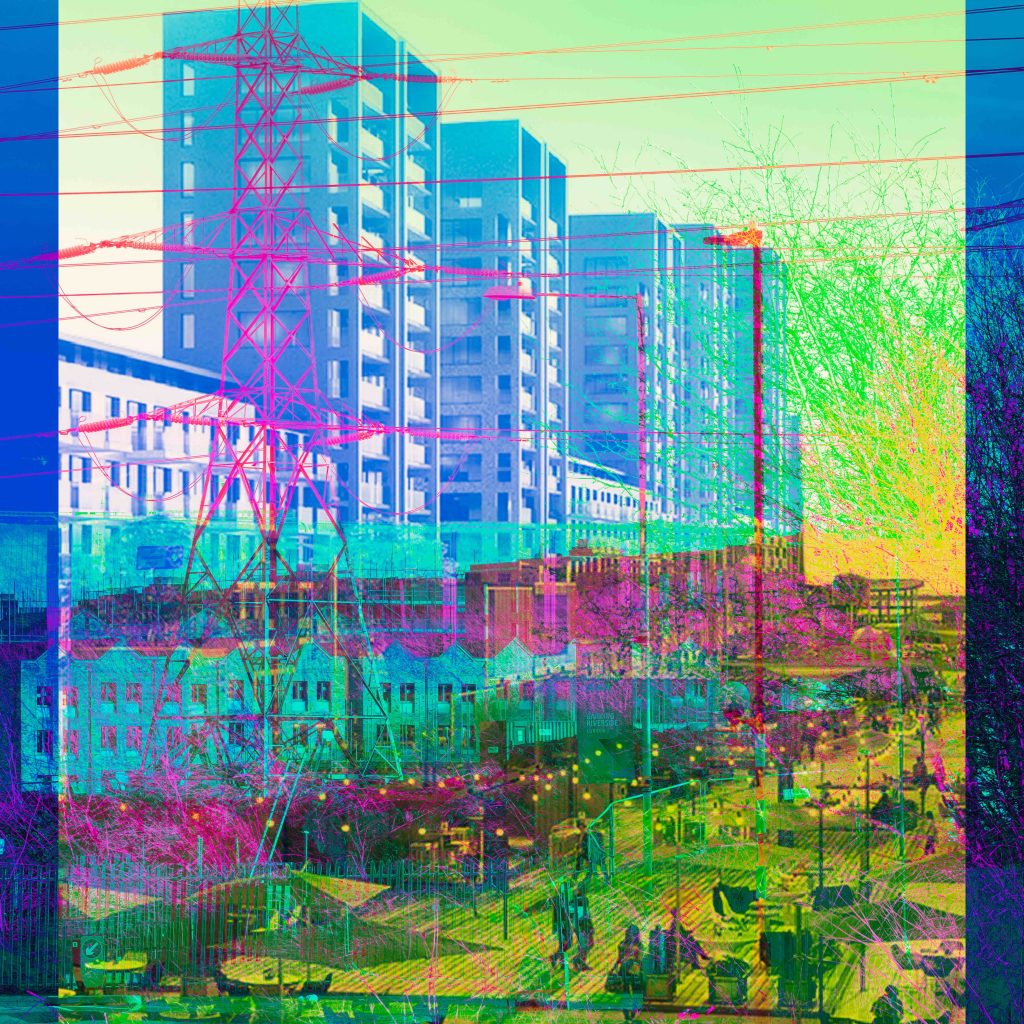
A monochrome version of the same image opens up an exploration of the affordances of colour and monochrome images in this context.

More experiments to follow …



